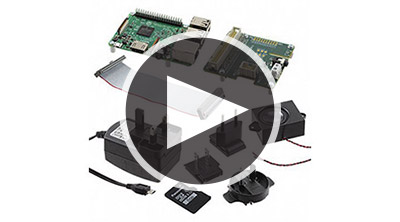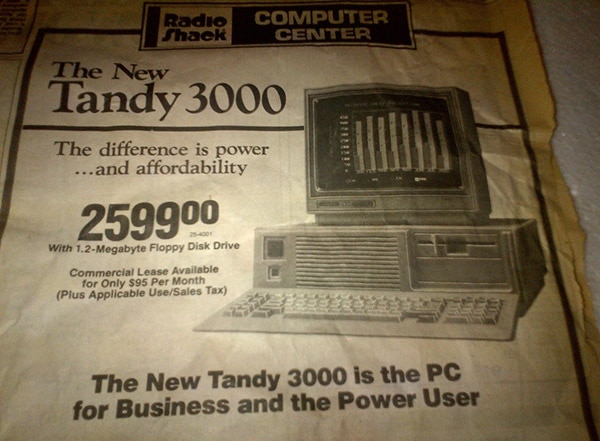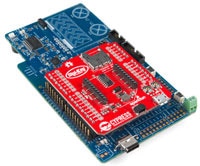Amazon Alexa
 Figure 1. Amazon Echo – 1st Generation (Image source: Amazon.com)
Figure 1. Amazon Echo – 1st Generation (Image source: Amazon.com)
“Alexa, what is the weather this weekend?” “Alexa, tell me a joke.” Those were the first two things I said to my Amazon Echo. Amazon Echo is a voice-controlled personal assistant that runs off Amazon’s voice platform, Alexa Voice Service (AVS). A person uses a wake word to communicate with the Echo.
I received an email a few months before the Echo was officially released that offered me the opportunity to purchase an Echo at a 50% discount. I read about the Echo and thought it might make my life easier. With one simple command to “Alexa,” I could add whatever item I needed onto a list. No more liquid-stained or dirty hand printed lists, finding a pen, or forgetting the lists at home. I could just use the wake word and add my item to the list. That list is then stored in an app that is located on my phone. Like most people, I do not leave home without my phone, so I would always have my list and that list would be clean.
My wife was not excited about this life changing personal assistant that I ordered. She didn’t mind forgetting the list as it gave her the opportunity to go shopping again. My children thought this new electronic device would be awesome.
After two and a half years of having an Echo, my wife is now a fan, and my kids still think it is awesome. Although Alexa is now named Echo, (because it would turn on while we were talking to my daughter Alysa) our Echo is being used nearly every day. It is still being used for creating list, checking weather, and telling jokes, but also for measurement conversions while cooking, homework, definitions, recipes, timers, and music.
Amazon’s Alexa Voice Service (AVS) is currently able to control some thermostats, lights, and can support Fitbits, doorbells, and phone systems through the Echo. It can also help order pizza, call for an Uber, and order from Amazon. There have already been announcements of integrating alarm clocks, TVs, refrigerators, washers, dryers, vacuum robots, and security. Future developments could allow things such as elevators and exercise equipment to be controlled by voice, eliminating the need for touch, reducing bacteria and germ transmissions.
AVS is also going to be in future products. BMW recently announced that AVS will be integrated into BMWs starting in mid-2018. Ford previously announced an integration of Alexa in select cars. Amazon also recently announced a partnership between Microsoft’s Cortana and Alexa. This will allow Alexa to use Office products, such as accessing work calendars and emails.
To increase the number and types of devices supporting Alexa, Amazon AVS provides developers with access to a suite of resources to quickly and easily build Alexa-enabled products, including APIs, hardware development kits, software development kits, and documentation. The Amazon Developers site has a wealth of support for developers, and includes a range of reference far-field and hands-free development kits.
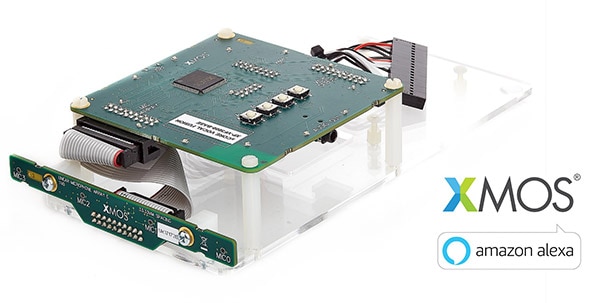 Figure 2. The VocalFusion 4-Mic Development Kit for AVS (Image source: XMOS)
Figure 2. The VocalFusion 4-Mic Development Kit for AVS (Image source: XMOS)
XMOS, a leading supplier of voice and audio solutions, recently launched the first AVS development kit with a far-field linear microphone array, the XK-VF3000-L33-AVS, allowing Alexa integration into flat equipment. AVS dev kits are designed for engineers and developers to incorporate AVS into new and future applications.
Mark Lippett, President and CEO at XMOS, told me that “this first XMOS development kit for Amazon AVS features a linear mic array, which will enable entirely new categories of solutions to be developed and brought to market. The linear implementation will move Alexa from circular table top devices, and enable transparent integration into smart panels, kitchen appliances and other wall-mounted and close-to-wall devices in smart environments.” The XK-VF3000-L33-AVS includes four Infineon high SNR MEMs microphones that can capture voice signals even in noisy environments. It is the first solution to feature a reference client built using the recently released AVS Device SDK. The AVS Device SDK simplifies the creation of voice enabled products.
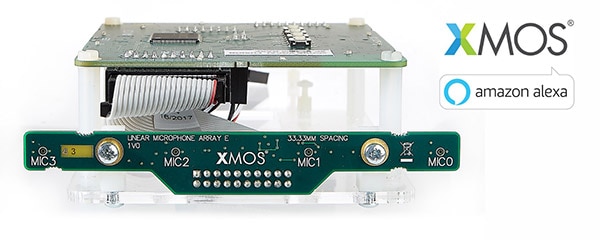 Figure 3. The VocalFusion 4-Mic Development Kit for AVS Showing the Microphone Array (Image source: XMOS)
Figure 3. The VocalFusion 4-Mic Development Kit for AVS Showing the Microphone Array (Image source: XMOS)
Inside the kit is XMOS’s xCORE VocalFusion™ XVF3000 processor. It is this processor that enables the kit to provide far-field voice capture and processing. This includes echo cancellation and noise suppression. All that is needed for developing with AVS is a kit from XMOS, a speaker, and a Raspberry Pi. With XMOS’s kits, development with AVS is simplified, and designers are now able to incorporate in nearly anything. What design of yours will need AVS?

Have questions or comments? Continue the conversation on TechForum, Digi-Key's online community and technical resource.
Visit TechForum





